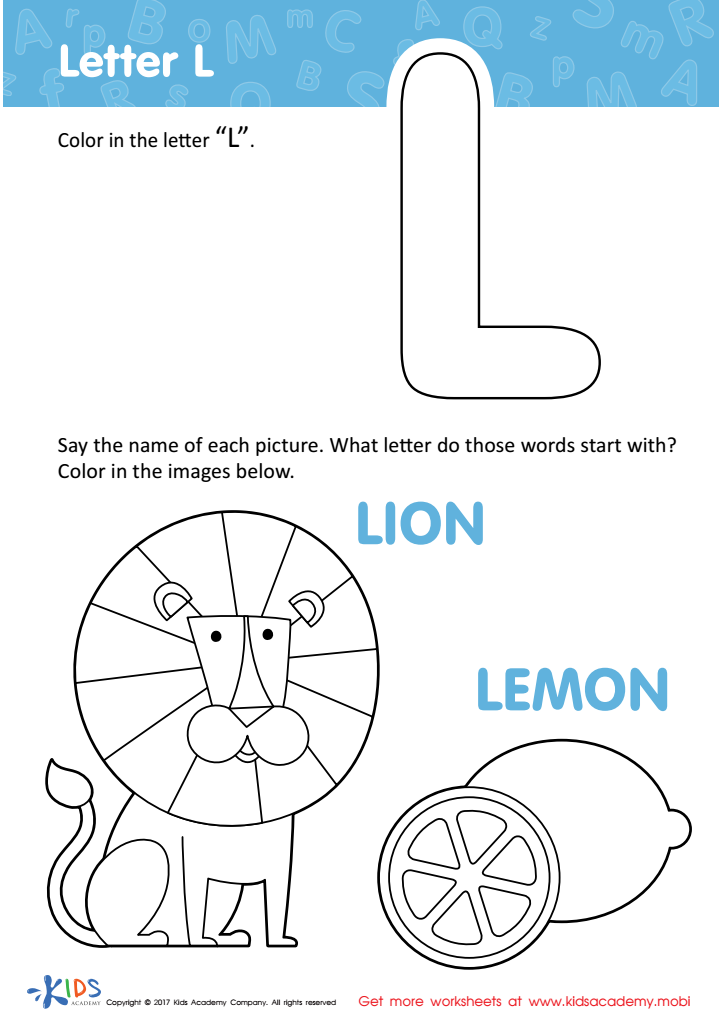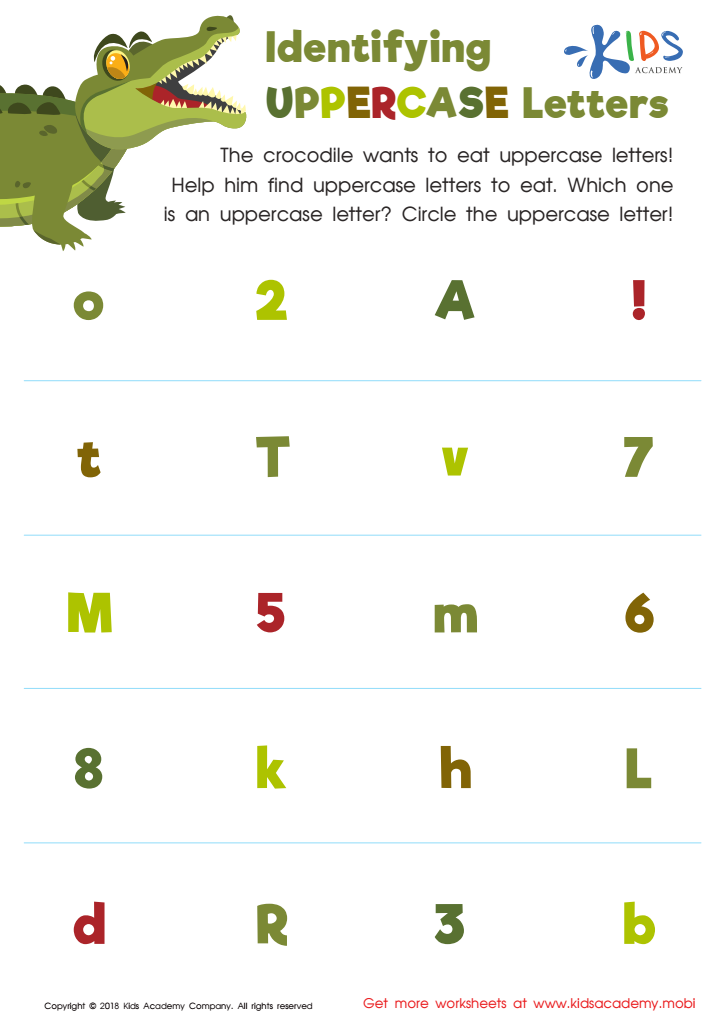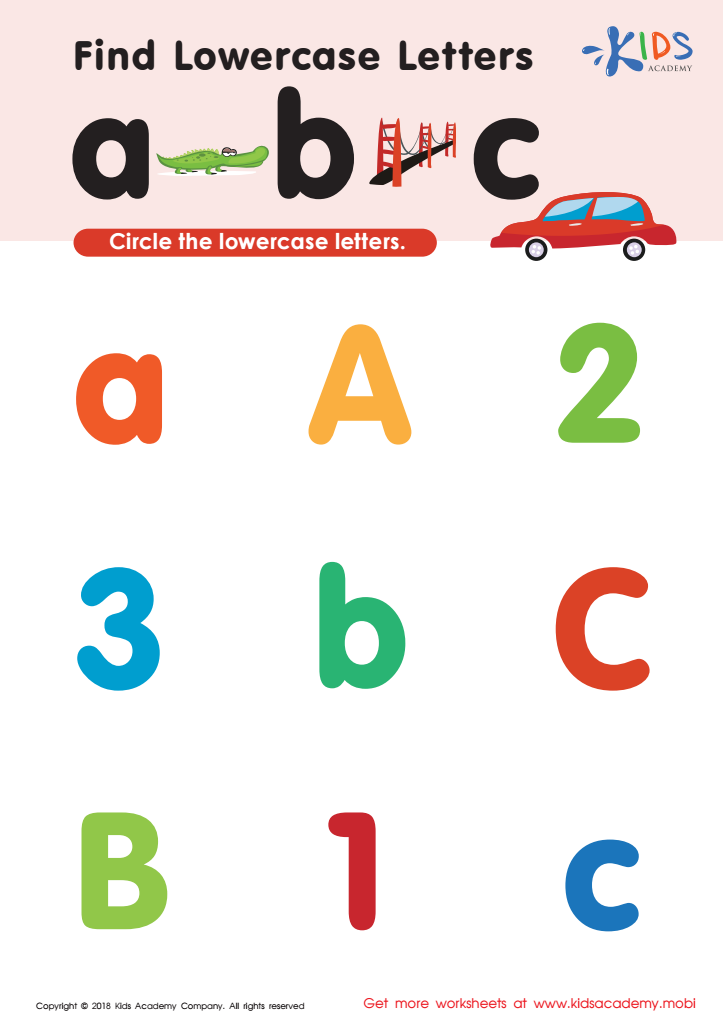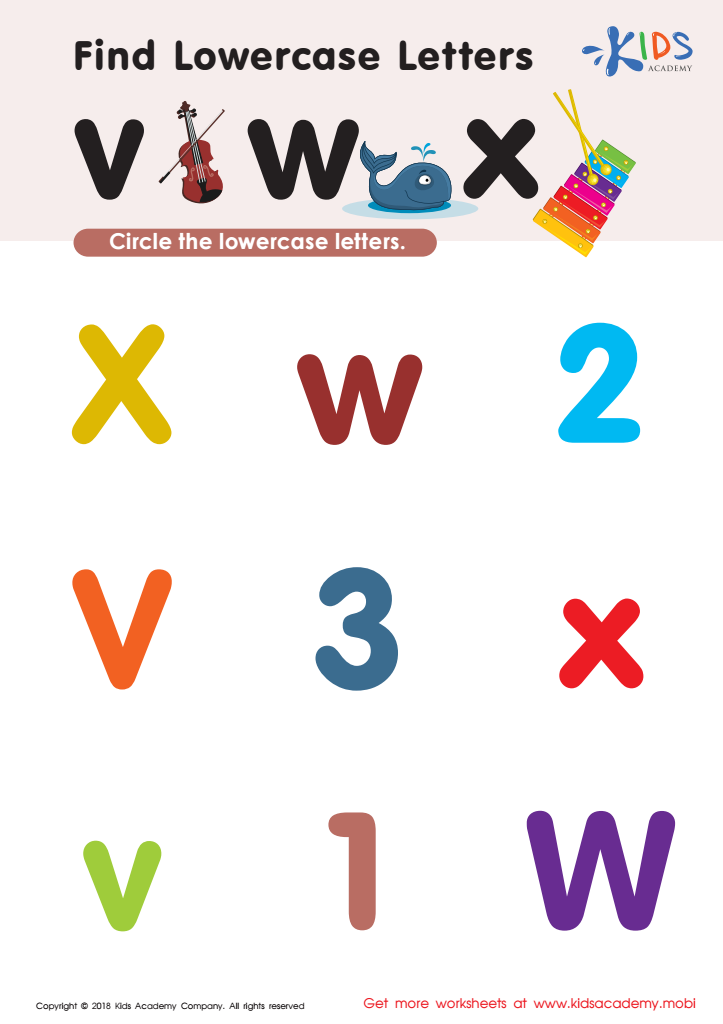Visual discrimination skills Normal Letter Recognition Worksheets for Ages 5-8
5 filtered results
-
From - To
Enhance your child's learning journey with our Visual Discrimination Skills Normal Letter Recognition Worksheets tailored for ages 5-8. These engaging worksheets are designed to help young learners identify and distinguish between various letters, reinforcing their foundational literacy skills. By practicing visual discrimination, children improve their ability to recognize letters in diverse contexts, laying the groundwork for reading and writing success. Our user-friendly resources combine fun activities with impactful learning, making it easy for educators and parents to support their child's developmental needs. Download our worksheets today to cultivate essential skills that will empower your child in their educational adventures!


Letter L Coloring Sheet


Find Uppercase Letters A, B, and C Worksheet


Identifying Uppercase Letters Worksheet


Find lowercase letters a b c Worksheet


Find Lowercase Letters v w x Worksheet
Visual discrimination skills and normal letter recognition are crucial components for children aged 5-8 as they lay the foundation for literacy and academic success. Children in this age group begin to develop essential skills necessary for reading, writing, and overall learning. Visual discrimination allows children to identify differences and similarities in letters, shapes, and words, which is vital for recognizing letters accurately and efficiently.
Teachers and parents should prioritize these skills because they directly impact a child’s ability to decode text and understand written language. Children who struggle with visual discrimination may experience difficulties in reading, leading to frustration and decreased motivation. Early recognition of these challenges enables timely interventions that can boost a child's confidence and skills.
Moreover, fostering strong visual discrimination and letter recognition skills helps children develop critical thinking and problem-solving skills, essential for future academic pursuits. Engaging children through games, activities, and exercises focused on visual discrimination can make learning fun and can turn challenges into accomplishments. By supporting these developmental milestones, parents and educators play a significant role in establishing a solid foundation for lifelong learning and achievement. Ultimately, investing in these skills can lead to better outcomes in a child’s educational journey.
 Assign to My Students
Assign to My Students
















